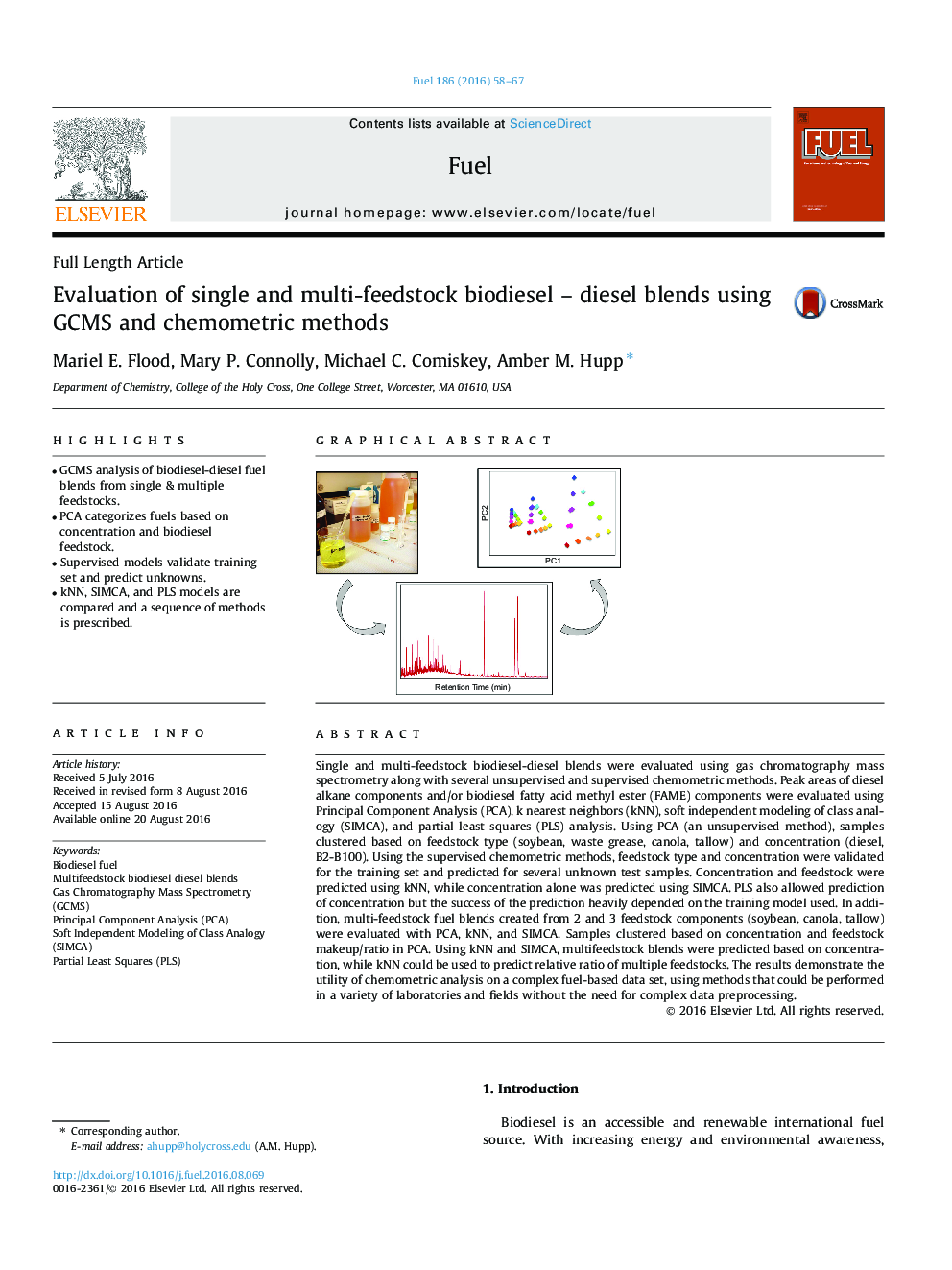| کد مقاله | کد نشریه | سال انتشار | مقاله انگلیسی | نسخه تمام متن |
|---|---|---|---|---|
| 6476008 | 1424978 | 2016 | 10 صفحه PDF | دانلود رایگان |

• GCMS analysis of biodiesel-diesel fuel blends from single & multiple feedstocks.
• PCA categorizes fuels based on concentration and biodiesel feedstock.
• Supervised models validate training set and predict unknowns.
• kNN, SIMCA, and PLS models are compared and a sequence of methods is prescribed.
Single and multi-feedstock biodiesel-diesel blends were evaluated using gas chromatography mass spectrometry along with several unsupervised and supervised chemometric methods. Peak areas of diesel alkane components and/or biodiesel fatty acid methyl ester (FAME) components were evaluated using Principal Component Analysis (PCA), k nearest neighbors (kNN), soft independent modeling of class analogy (SIMCA), and partial least squares (PLS) analysis. Using PCA (an unsupervised method), samples clustered based on feedstock type (soybean, waste grease, canola, tallow) and concentration (diesel, B2-B100). Using the supervised chemometric methods, feedstock type and concentration were validated for the training set and predicted for several unknown test samples. Concentration and feedstock were predicted using kNN, while concentration alone was predicted using SIMCA. PLS also allowed prediction of concentration but the success of the prediction heavily depended on the training model used. In addition, multi-feedstock fuel blends created from 2 and 3 feedstock components (soybean, canola, tallow) were evaluated with PCA, kNN, and SIMCA. Samples clustered based on concentration and feedstock makeup/ratio in PCA. Using kNN and SIMCA, multifeedstock blends were predicted based on concentration, while kNN could be used to predict relative ratio of multiple feedstocks. The results demonstrate the utility of chemometric analysis on a complex fuel-based data set, using methods that could be performed in a variety of laboratories and fields without the need for complex data preprocessing.
Graphical AbstractFigure optionsDownload high-quality image (103 K)Download as PowerPoint slide
Journal: Fuel - Volume 186, 15 December 2016, Pages 58–67